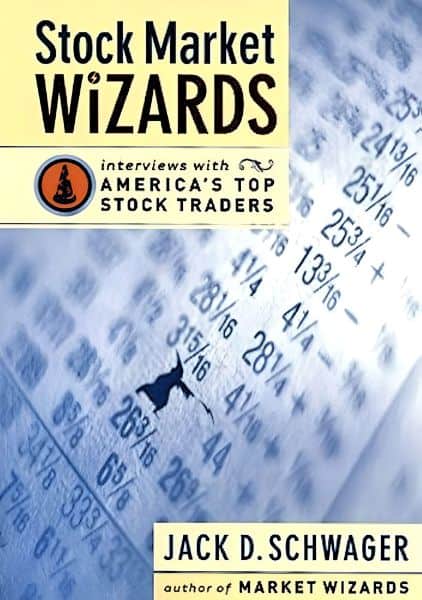Monroe Trout is one of the successful hedge fund managers interviewed in Jack Schwager’s The New Market Wizards. With an average return of 67 percent over five years and a maximum drawdown of just over 8 percent, Trout’s track record surpasses his peers in terms of his return-to-risk ratio. He started his career at Victor Niederhoffer’s NCZ Commodities and later founded his own firm, Trout Trading, in 1986. Despite his success, Trout remains modest and focused on delivering results for his clients. The following is an analysis of Monroe Trout’s trading approach along with his market insights.
Monroe Trout On Edge, Risk Control, & Market Probabilities
Trout discussed the benefits of combining an edge with proper risk control in Jack Schwager’s The New Market Wizards:
Make sure you have an edge. Know what your edge is. Have rigid risk control rules. […] Basically, when you get down to it, to make money, you need to have an edge and employ good money management. Good money management alone isn’t going to increase your edge at all. If your system isn’t any good, you’re still going to lose money, no matter how effective your money management rules are. But if you have an approach that makes money, then money management can make the difference between success and failure.
He also explained how markets are not normally distributed:
If you assume that price changes are normally distributed, the probability of daily price moves of that magnitude [like the high-volatility days in October 1987 and October 1989] would be virtually zero, which, of course, it was not. […] the probability of very large price changes, while still small, was much greater than might be assumed based on standard statistical assumptions. Therefore, a risk control methodology must be prepared to deal with situations that statistically might seem nearly impossible, because they’re not.
The flip side is also true… a majority of profits are also made through tail-end events. It’s important to build a strategy that takes advantage of these less frequent upside moves. This requires using the concept of Totis Porcis to cash in on those fat tails.
Monroe Trout On Avoiding Blow Ups
…My traders are under instructions to alert me anytime something important happens. They also keep me posted as to when markets are likely to be particularly volatile based on fundamentals or news announcements. An example of that type of an announcement was Jim Baker’s statement to the press on January 9. We were set up for a more peaceful type of an announcement. […]January 9, 1991, was the day that Secretary of State James Baker met with the Iraqi ambassador in an effort to avert a war. At the time, there was a reasonable degree of optimism going into the meeting because a continued hard-line stance seemed such folly for Iraq. Addressing the press after the meeting, Baker began his statement, “Regrettably….” Traders didn’t wait to hear the second word, and a wave of selling hit the stock and bond markets.[…] With the type of size we trade, it was all over. For example, we lost 1,200 points in the S&P in a half-hour, and most of that was in the first ten seconds. We were long about seven hundred contracts. If we had tried to sell into that type of market, we would have amplified the decline and probably would have ended up selling at the low of the day[…] Once I realized that we were down over 4 percent, I devised an orderly plan to exit all markets by the close. In that type of situation I try to devise an exit plan and then get out of the trading room because I want the liquidation done in a rational manner.[…] I never want to get into a situation where it’s so bad that I can’t get over it. That’s one of the reasons I try to be conservative in my risk management. I want to make sure I’ll be around to play tomorrow.
Trout’s final loss that day was around $9.5 million and he lost most of it in about ten seconds. It was a large loss, but not large enough to put him out of business. His risk control system protected him against blowing up.
Another important thing Trout did was create an exit strategy and then step out of the way. He knew how emotional he would be with those big losses coming in, so he removed himself to not let his bias take over and make it worse.
Monroe Trout’s Risk Management Rules
- One of my risk management rules is that if we lose more than 1.5 percent of our total equity on a given trade we get out.
- If we’re down 4 percent on a single day, we close out all positions and wait until the next day to get into anything again.
- We have a maximum loss point of 10 percent per month. If we ever lost that amount, we’d exit all our positions and wait until the start of the next month to begin trading again.
- At the beginning of each month, I determine the maximum position size that I’m willing to take in each market, and I don’t exceed that limit, regardless of how bullish or bearish I get. This rule keeps me in check.
In the event from above (January 9th, 1991) Monroe implemented the 4% rule and completely liquidated his portfolio.
Although his rules didn’t provide much assistance during that particular event due to the size of his position and the magnitude of the market move, Monroe affirmed his decision to maintain his rules.
He emphasized that without them, he could have easily found themselves holding onto the S&P on a day like October 19th, 1987 (Black Monday), which would have resulted in a catastrophic outcome if his exit was delayed
If you want more lessons from legendary investors like Monroe Trout, check out our free guide on the strategies of the most successful traders here.








